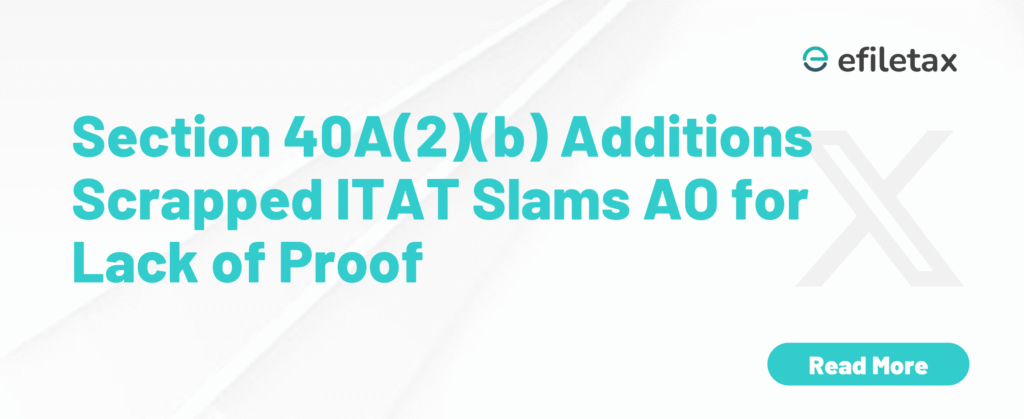
Disallowance of Related Party Payments What Section 40A(2)(b) Really Means
The Income Tax Act, 1961, allows disallowance of related party payments if they are deemed excessive or unreasonable. But who decides what’s excessive? A recent ITAT decision clarified that unless the Assessing Officer (AO) provides solid proof, such disallowance cannot stand.
Here’s a simplified breakdown of Section 40A(2)(b), the legal background, and the latest ITAT judgment that could impact many businesses in India.
What is Section 40A(2)(b) of the Income Tax Act?
Section 40A(2) empowers the AO to disallow part of an expenditure if:
- It is incurred in respect of goods, services, or facilities from a related party, and
- The payment is excessive or unreasonable compared to market value or business need.
Related parties under Section 40A(2)(b) include:
- Directors and partners
- Relatives of directors or partners
- Companies where these people have substantial interest
Key Elements Required for Disallowance
The AO must demonstrate:
- Existence of related party under Section 40A(2)(b)
- Comparison with market price to establish excessiveness
- Lack of business justification for higher payment
Expert View: “Just because two parties are related doesn’t mean a transaction is unreasonable. Disallowance requires clear proof of unjustified payment.” – Tax Consultant, Efiletax Panel
Recent ITAT Ruling: AO Must Prove Excessiveness
In the case of ACIT vs. Himadri Speciality Chemical Ltd. (ITAT Kolkata), the AO disallowed certain payments made to a related party, citing Section 40A(2)(b). However, the Tribunal deleted the addition.
Why?
- The AO did not compare the payment with fair market value.
- No independent benchmarking or third-party price analysis was provided.
- The taxpayer had proof of business need and prior year consistency.
📌 Takeaway: Mere suspicion or relationship is not enough for disallowance.
Comparison Table: When Can Section 40A(2)(b) Be Invoked?
| Condition | Disallowance Valid? |
|---|---|
| Relationship exists, but price is market-driven | ❌ No |
| Price is higher, but business need is justified | ❌ No |
| No documentation of fair market value | ❌ No |
| Excessive price + no justification | ✅ Yes |
How to Defend Against Section 40A(2)(b) Disallowance
✅ Maintain third-party quotations or market comparisons
✅ Keep a documented rationale for payments
✅ File board resolutions or approval notes
✅ Highlight similar payments allowed in earlier years without objection
Government Clarifications on Reasonableness
As per CBDT Circular No. 6P dated 06.07.1968:
“It is open to the taxpayer to show that the payment is not excessive or unreasonable, and if so proved, no disallowance should be made.”
This old but still-relevant clarification remains a strong defense for genuine businesses.
FAQs on Disallowance of Related Party Payments
Q1. Is every related party payment disallowed under Section 40A(2)(b)?
No, only if it is proved to be excessive or unjustified.
Q2. What documents help defend such payments?
Market price studies, board approvals, past audit records, and commercial agreements.
Q3. Is ITAT’s judgment binding on all cases?
Not legally binding like Supreme Court rulings, but persuasive for similar factual situations.
Summary
Section 40A(2)(b) allows disallowance of related party payments only if the AO proves they are excessive. ITAT recently held that without such proof, additions cannot stand. Taxpayers must maintain fair pricing evidence to avoid disallowance.
Final Word: Don’t Fear Section 40A(2)(b) – Be Prepared
Disallowance of related party payments isn’t automatic. The onus is on the AO to prove unreasonableness. If you maintain proper documentation, you can defend your case effectively.